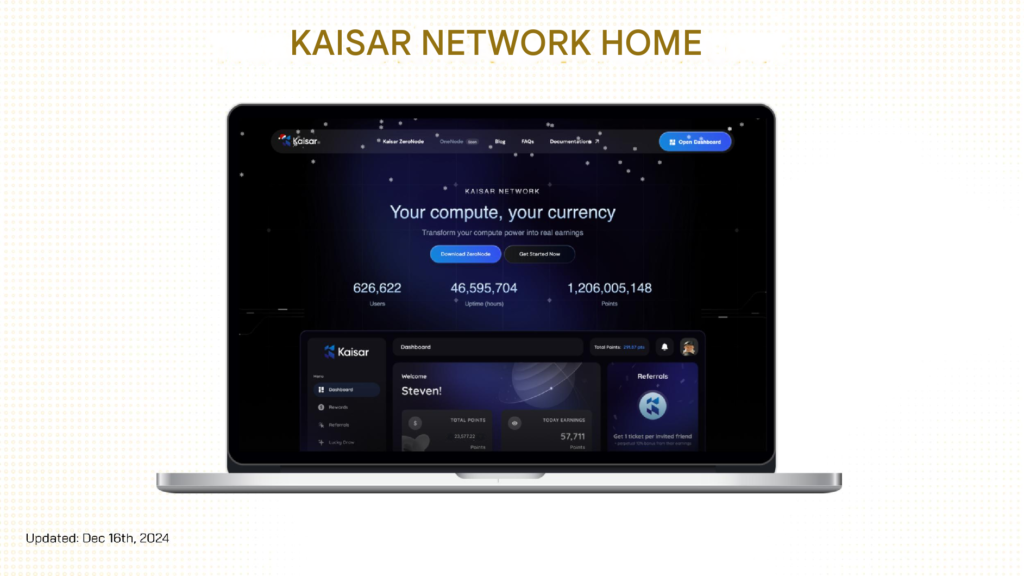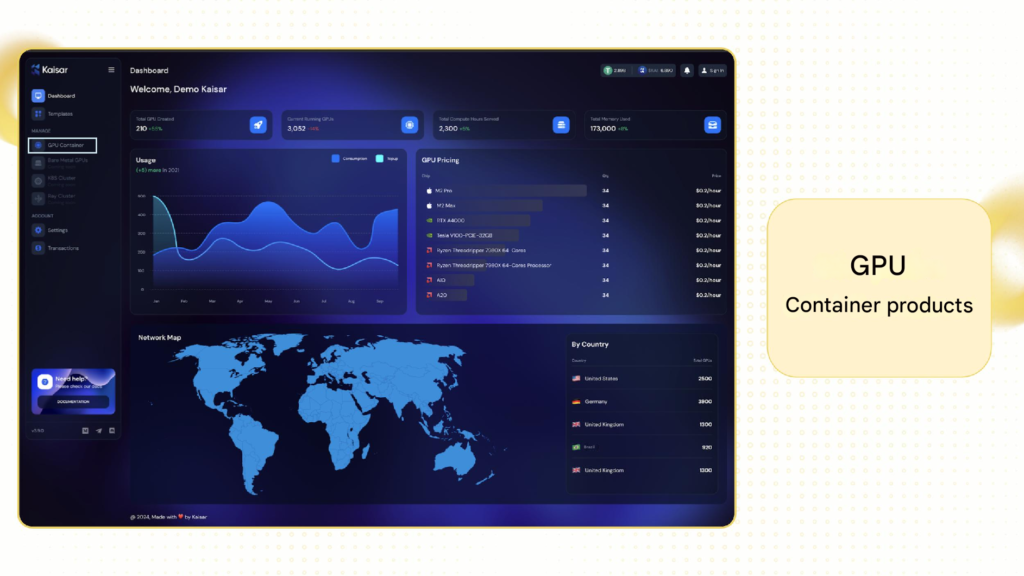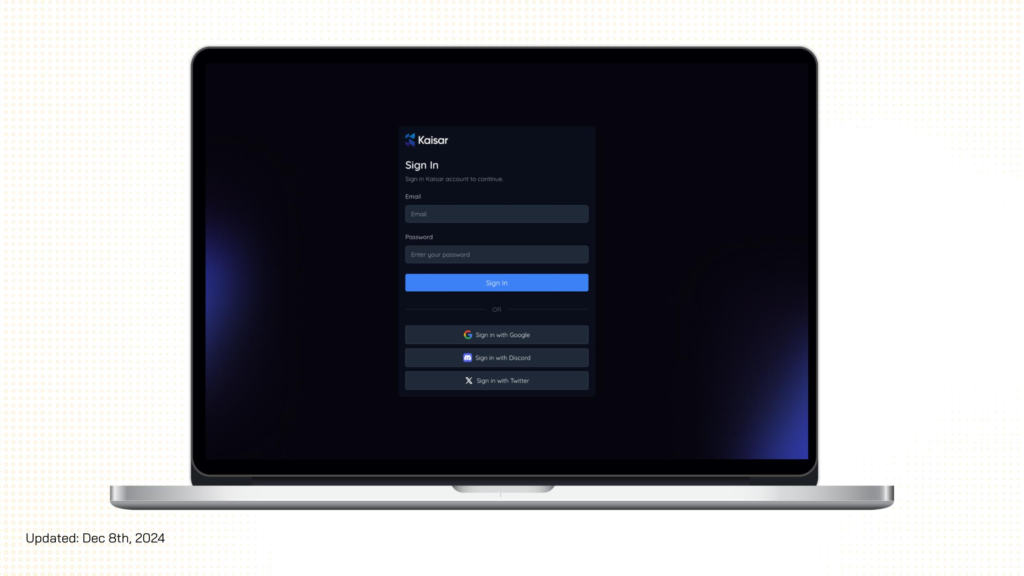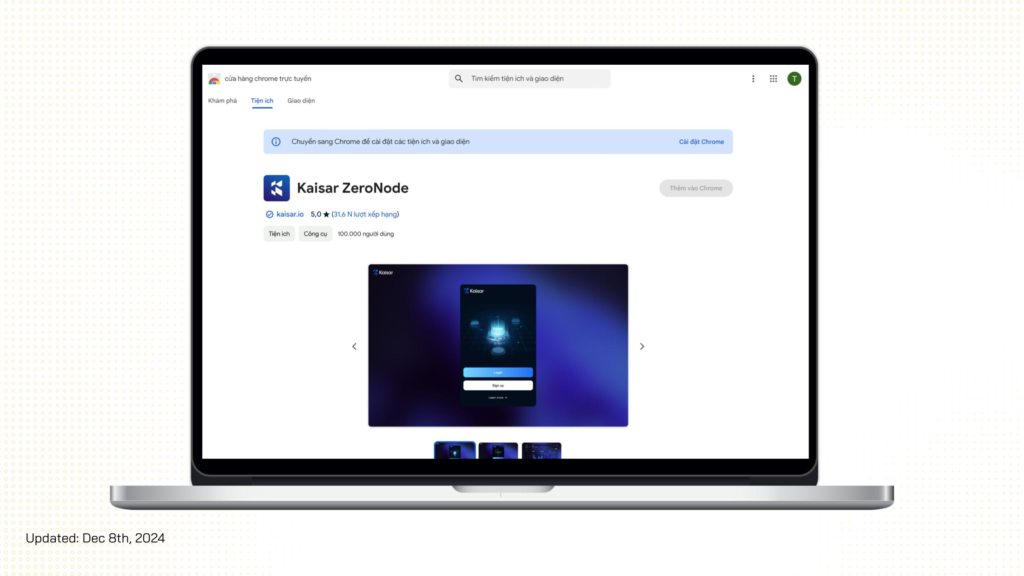Projects working on infrastructure in the DePIN field are emerging more and more. Most of their purposes serve the AI field. The Kaisar Network project is the same. Learn about Kaisar Network and how to hunt airdrops here.

What is Kaisar Network?
Kaisar Network is a DePIN protocol that builds a decentralized computing sharing network. Basically, the platform aggregates excess computing power from users’ personal devices to serve intensive computing tasks in the field of machine learning and artificial intelligence (AI).
The goal of Kaisar Network is to address the cost and performance limitations in accessing large-scale computing resources. By leveraging excess computing resources from the community, Kaisar Network creates a decentralized, flexible and efficient computing platform, promoting the development of various fields: AI, healthcare, finance…

Kaisar Network’s Operating Model
The architecture of Kaisar Network consists of 4 main components:
- Users: Those who need to rent computing power from specialized chips like GPUs, CPUs, etc., for complex tasks.
- Providers: Provide computing resources from GPUs, CPUs, etc., to the network to receive rewards based on their contributions.
- PEAQ Blockchain: A Layer-1 blockchain designed and optimized for the DePIN landscape. According to the project, PEAQ Blockchain supports over 100,000 transactions per second with low fees. Additionally, the network can seamlessly interact with other blockchains like Polkadot, Cosmos, and Solana via the Wormhole protocol.
- Kaisar Checker: Responsible for ensuring the integrity of the data shared on the network. Kaisar Checker employs the Proof of Physical Work consensus mechanism, meaning they utilize computing power to solve complex computational tasks. Completing these tasks generates “proof” that they have verified the quality of the resources and receive rewards.
In summary, Kaisar Network operates as a marketplace for renting computing resources, directly connecting those in need of high computing power (users) with those who own the devices (providers). The operating process can be summarized as follows:
Users with computational needs submit requests to the network.The system searches for the provider with the most suitable resources to match the user’s request. During this process, Kaisar Checker conducts periodic checks to ensure service quality.
The user then pays the provider based on the amount of resources used. PEAQ Blockchain records the results and status of the transaction.Finally, the provider and Kaisar Checker receive rewards corresponding to their contributions.
Kaisar Network Products
Kaisar Network’s ecosystem has developed four products to cater to user needs:
- Kaisar GPU Container: A decentralized computing platform providing access to high-performance GPU devices globally. With Kaisar GPU Container, users can easily access and utilize these GPUs through an online interface without investing in hardware. These GPUs are optimized for handling complex computing tasks, especially in AI, machine learning, and scientific simulations.
- Kaisar Ray Cluster: A computing platform enabling the breakdown of complex tasks into smaller parts and distributing them to computing devices. This accelerates data processing, proving particularly useful for applications requiring substantial computing resources. Kaisar Ray Cluster allows users to pay flexibly based on the amount of resources used.
- Kaisar K8s: Offers a development environment for programmers to execute and develop AI applications. K8s integrates tools like CI/CD to automate the deployment process, minimizing errors, and improving time-to-market.
- Kaisar Worker: Provides a platform for users to contribute their computing power from personal devices to earn rewards from Kaisar. Kaisar Worker automatically distributes and adjusts resource allocation to maximize performance without affecting the user’s device usage experience

Kaisar Network Airdrop Hunting
Kaisar Network is currently running a node program; the platform encourages users to participate to accumulate points. These points can potentially be converted into tokens when the project conducts an airdrop later. The specific process is as follows:
Step 1: Access the application here. Register an account in Kaisar Network using your email, then verify the email to access the application.

Step 2: Download and install the Kaisar Zeronode extension on Google Chrome. Then, turn on the application to allow the platform to automatically mine computing power and accumulate points for the user.
Within the Kaisar Node application, there are several features that users should be aware of:
- Dashboard: Allows users to track and monitor the points earned.
- Rewards: Check the details of accumulated points.
- Referrals: Get a referral code and share it with others to earn points.
- Lucky Draw: Exchange points to spin for rewards in a lucky draw format. Rewards can be USDT or NFTs.
- Missions: Daily tasks provided by the platform for users to have the opportunity to earn more points.

Similar projects
- Vana: An AI-focused Layer-1 blockchain providing a decentralized data-sharing network for users to contribute and earn rewards.
- Rivalz Network: A DePIN protocol that builds an Abstraction Layer for AI, allowing AI Agent models within the blockchain environment to interact with each other seamlessly
Read more: If you need a product to assist with tax issues and portfolio management in crypto, check out CoinLedger

